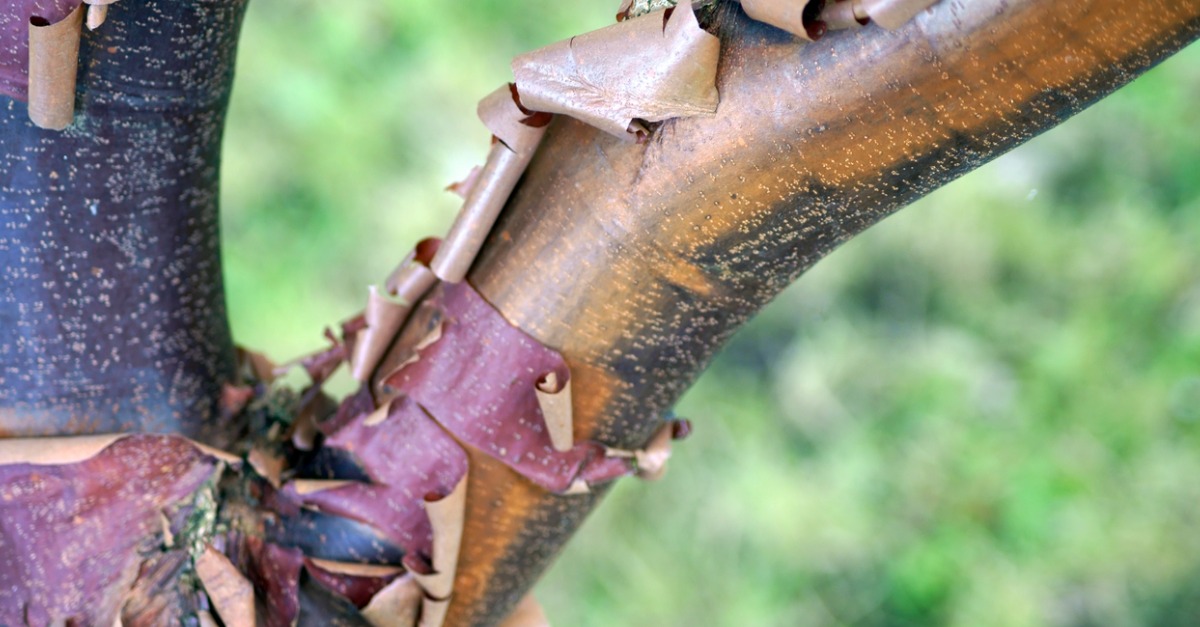Be a Georgia Tree Know It All: Paperbark Maple
Get to know Georgia’s beautiful array of trees and how you can take care of your own! Each month, we feature some of the most popular trees in the state, including the Black Cherry, American Yellowwood, and Sassafras tree.
This month, we are showcasing the Paperbark Maple (Acer griseum) — perhaps the South’s most beautiful maple!
Characteristics
Home gardeners can count on the Paperbark Maple. With its height between 20 and 30 feet tall, it is sure to be a stately ornamental tree, as its canopy spreads anywhere from 15 to 25 feet. The green flowers are subdued, but its magnificent fall color can include orange, bronze, purple, or russet red.
Two prized attributes are its unique trifoliate leaves, and a dense growth habit. But one of its finest ornamental features is its peeling, cinnamon-brown bark, which stands out with particular brilliance should you experience some winter snow. The Chicago Botanic Garden assures this is “a superb small maple with wonderful bark.”
Paperbark Maple is both a multi-trunked and low-branched specimen. Its showy, oval-shaped brown fruit grows between 1 – 3 inches, but does not attract wildlife. Overall, this lovely tree will not create a litter problem for your yard! It is commonly used as a dramatic specimen for landscaping, with the suggestion to light it from below at night.
Growing Conditions
The Paperbark Maple thrives within a mix of full sun and partial shade. It tolerates multiple soils so long as they are well-drained, including those that involve a mix of clay, sand, or loam, and pH levels ranging from acidic to slightly alkaline. It is moderately drought tolerant. While the tree is hardy, propagation can be difficult and expensive, as many of the seeds are sterile.
Partial shade is the best choice for growing Paperbark Maple in the South, according to the University of Florida Extension. The tree can be grown in zones 4-8 (Atlanta and North Georgia are in zone 7) and it blooms from March through May.
Tree Care
These trees should be pruned after the blooms are spent in late winter to early spring. Monitor for pests, diseases, and other problems regularly, protect the trunk against extreme winter freezing, and from damage by mowing and other maintenance during warmer seasons. But in general, the Paperbark Maple shares similar issues with pests and diseases that can afflict other maple varieties, such as Verticillium Wilt, Crown Gall, and Anthracnose.
Signs of Distress
Extended drought and poor soil can be a stressor for the Paperbark Maple, especially in the South. It must be given ample irrigation in a dry summer, to prevent leaves from scorching. Leaf scorch is a general classification for numerous problems that can befall maple trees, but tell-tale signs include light brown or tan dead spaces along leaf edges and between veins. Verticillium wilt is another common problem in maples and is sometimes referred to as “maple wilt.” While caring for the Paperbark Maple, also stay on the lookout for powdery mildew and lichen.
Whether your trees are stately specimens or ornamental shade trees, we want to keep them healthy for years to come. When you need quality pruning and trimming service for your Paperbark Maple and other trees, contact us online or call us at 404.252.6448.










